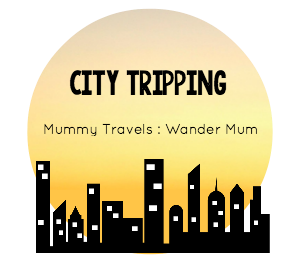Diamonds have always been the ultimate symbol of love, luxury, and commitment.
But in 2025, the diamond conversation is sparkling with fresh energy. Lab-grown diamonds have arrived as a modern marvel, gently shaking up tradition and offering couples more choice than ever before. Now, couples are exploring what their choice of diamond engagement ring really means to them.
Image credit: Alekon Pictures via Unsplash
So, why are people increasingly drawn to lab-grown diamonds, and how do they really compare to their earth-mined counterparts? Let’s take a closer look at the pros, cons, and which one best resonates with you and your love story.
What Are Lab-Grown Diamonds?
Lab-grown diamonds are not just a trend; they are the product of sophisticated science and a growing demand for ethical luxury. Manufactured in high-tech laboratories, these diamonds are created by replicating the intense pressure and heat conditions that naturally form diamonds deep within the Earth.
The result is a gemstone that is chemically, physically, and visually identical to a natural diamond. The key difference lies solely in their origin: one is born from the earth over billions of years, the other crafted in weeks within a lab. But both produce that amazing shine that makes a diamond feel so stunning.
Why Are They Becoming Popular?
Lab-grown diamond engagement rings are quickly making their mark, and it’s easy to see why.
In a world where our values and choices feel more important than ever, couples are looking for a ring that really resonates with them. These stones offer a thoughtful alternative for those who want their jewellery to reflect both their love and their principles.
Here are the most common reasons couples are choosing lab-grown diamond rings over real ones…
- Ethical peace of mind: Choosing a lab-grown diamond means sidestepping the environmental and social issues that can come with traditional mining. For many, this brings a sense of reassurance and pride in their choice.
- A lighter footprint: With a much smaller carbon footprint, lab-grown diamonds appeal to those who want their love story to tread lightly on the planet.
- More diamond for your money: Lab-grown stones usually cost 30–40% less than their natural counterparts, giving you the freedom to opt for a larger stone or a more intricate setting, without stretching your budget.
- Consistent beauty: Created in controlled conditions, these diamonds have excellent clarity and colour, delivering that mesmerising brilliance couples adore.
With more people questioning the origins and impact of what they wear, lab-grown diamonds stand out as a symbol of modern romance, one that balances tradition with a fresh and thoughtful perspective.
Image credit: Warren James
Are There Any Drawbacks?
Although lab-grown stones have plenty to offer, they’re not without their drawbacks. For couples considering every angle, it’s worth being aware of a few potential downsides that could make a difference when choosing their engagement ring.
These include…
- Long-term value: Unlike natural diamonds, lab-grown stones tend to depreciate more quickly and generally don’t hold their value over time, which can make them less appealing from an investment perspective.
- Perception and tradition: Some people still see natural diamonds as the more traditional or ‘authentic’ choice. This can be especially true in families or cultures with strong ties to tradition.
- Energy-intensive production: Although lab-grown diamonds avoid the environmental damage of mining, their creation is still energy-intensive. Producing these stones can require significant electricity, sometimes sourced from fossil fuels, which may reduce their sustainability appeal.
While lab-grown diamonds are a brilliant choice for many, weighing these considerations alongside their benefits will help ensure your engagement ring truly reflects what matters most to you.
Image credit: Korie Cull via Unsplash
Natural Diamonds: Timeless, Rare, And Full Of Story
Natural diamonds have always held a special place in the hearts of couples looking for the perfect sign of their commitment to each other. But their enduring appeal goes far beyond their sparkle.
For those weighing their options, it’s worth considering the qualities that make natural diamonds truly timeless…
- The epitome of tradition: Natural diamonds are steeped in history and symbolism, having been exchanged as tokens of love and commitment for generations. Their ancient origins add a sense of gravitas and romance that many find deeply meaningful.
- True timeless quality: There’s a certain magic in knowing your diamond is a rare product of nature, with unique inclusions and subtle quirks that make each stone one of a kind. This individuality is cherished by those who value authenticity and character in their jewellery.
- Heritage and value: Natural diamonds have long been reliable when it comes to holding their value over time. For many, this makes them a reassuring choice for couples hoping their engagement ring will become a treasured family heirloom.
- Classic perception: In many families and cultures, natural diamonds are still viewed as the traditional or ‘true’ choice for an engagement ring. This feeling of legacy can add a layer of significance to your ring, especially if you’re drawn to the idea of continuing a cherished custom.
While natural diamonds may come with a higher price tag and their own set of considerations, their history, individuality, and enduring symbolism continue to make them a compelling choice for those who want their ring to embody timeless love and tradition.
Image credit: Warren James
But natural diamonds also have their challenges
It's undeniable that natural diamonds have an undeniable allure. But they also come with a few challenges. If you’re looking at the full picture, it’s wise to weigh these potential drawbacks before making your decision.
- Ethical concerns: The diamond industry has a complex history, and issues related to conflict diamonds and unfair labour practices have cast a shadow over some sources. While certification schemes have improved transparency, it can still be difficult to guarantee that every diamond is ethically sourced.
- Environmental impact: Diamond mining can have significant effects on the environment, including habitat disruption, soil erosion, and water pollution. Even with improvements in mining practices, many diamonds may have a high carbon footprint.
- Higher cost: Natural diamonds are typically much more expensive than lab-grown alternatives of similar size and quality. While the premium reflects their rarity, it can put a traditional diamond out of reach for some couples.
- Inconsistency in quality: Because they are formed by nature, natural diamonds can vary widely in terms of clarity, colour, and inclusions. While this uniqueness is part of their charm, it can also make finding the perfect stone more challenging and costly.
While natural diamonds offer tradition, beauty, and a sense of lasting legacy, it’s important to consider these factors to ensure your engagement ring truly reflects your values and priorities.
Image credit: Warren James
Selecting a diamond for your engagement ring is about more than simply choosing a beautiful stone…it’s about finding one that speaks to your values, your story, and the future you envision together.
Ultimately, the right diamond is the one that feels authentically yours. Whether you’re inspired by the promise of new technology or the romance of tradition, let your choice reflect the story you want to tell. Your engagement ring should be bold, beautiful, and uniquely suited to you and your own love story together.
*Collaborative post





























